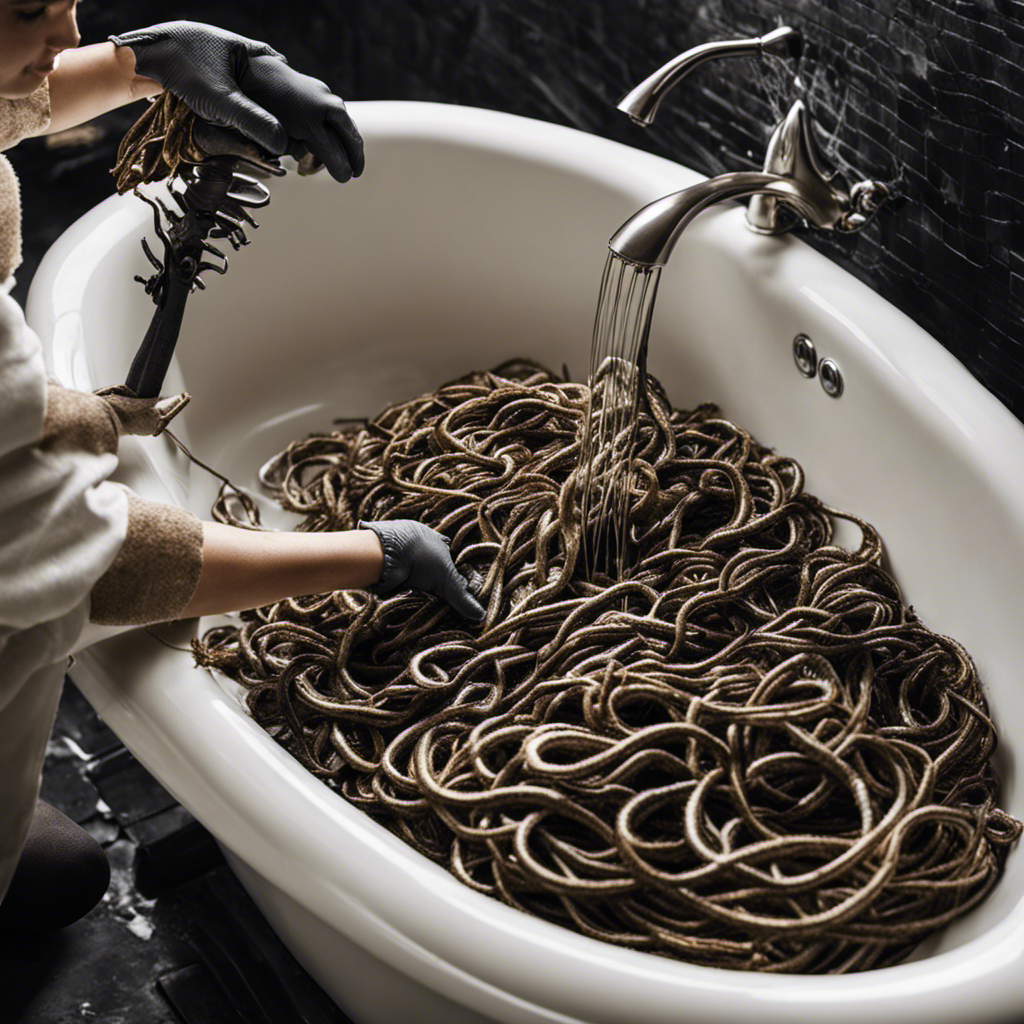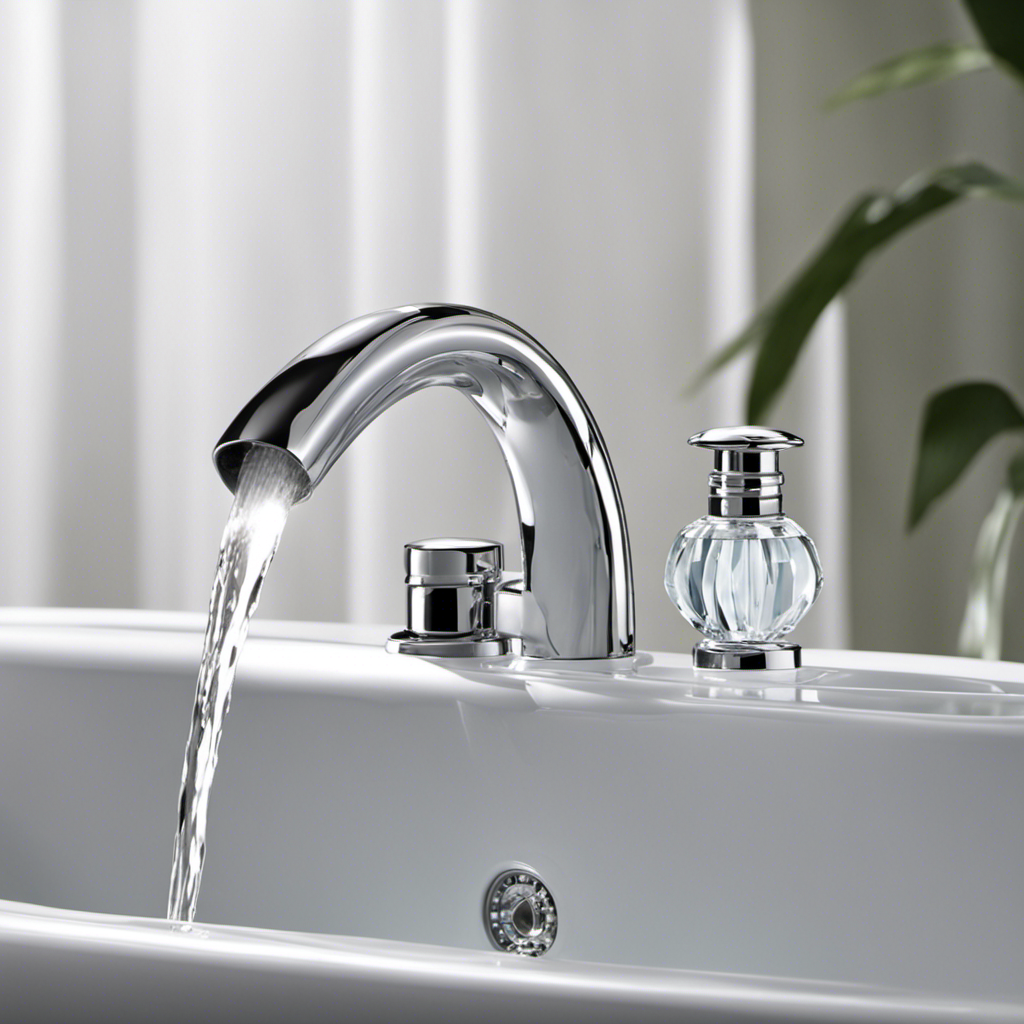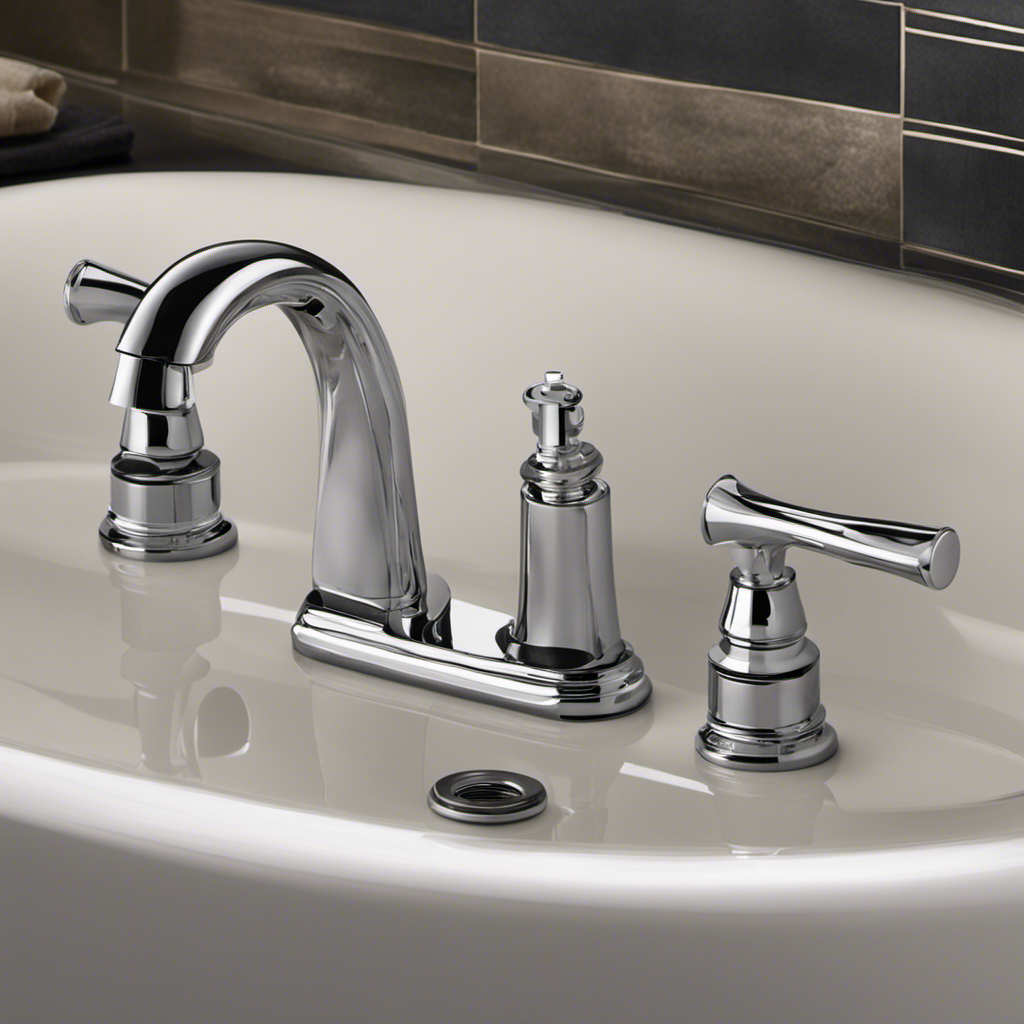As they say, ‘A leaky faucet can drive you crazy!’ Luckily, I’ve got just the solution for you.
In this article, I’ll guide you through the process of tightening your Moen bathtub faucet handle. With a few simple steps and the right tools, you’ll have that handle secure and squeak-free in no time.
So, let’s roll up our sleeves and get ready to fix that pesky faucet once and for all.
Key Takeaways
- The type of Moen bathtub faucet handle can vary and includes knob, lever, and cross designs.
- To remove the faucet handle, turn off the water supply, locate and remove the set screw, and gently pull the handle straight out.
- Before installing a new handle, inspect for damage or wear and address any underlying problems.
- When tightening the faucet handle, use a wrench to loosen the packing nut, tighten the handle screw without overtightening, and test for leaks and proper water flow.
Tools and Materials Needed
To tighten your Moen bathtub faucet handle, you’ll need a screwdriver and an adjustable wrench. Moen offers different types of bathtub faucet handles, including single-handle and double-handle options.
The process of tightening the handle may vary depending on the type you have. For a single-handle faucet, start by locating the set screw underneath the handle. Use the screwdriver to tighten it clockwise until it is secure.
If you have a double-handle faucet, you’ll need to access the screws located on the underside of the handle. Use the screwdriver to tighten these screws in a clockwise direction.
To maintain your faucet handle, periodically check for any loose screws and tighten them if necessary. Additionally, avoid excessive force when turning the handle to prevent wear and tear.
Identifying the Type of Moen Bathtub Faucet Handle
First, you’ll want to examine the shape and design of the knob on your Moen bathtub faucet to determine its type. There are several different types of faucet handles commonly found on Moen bathtubs, each with its own unique design and functionality. To help you identify the type of handle you have, here is a table outlining the different types and their characteristics:
| Type of Handle | Description |
|---|---|
| Knob | Round or oval-shaped handle that can be turned in either direction to control the water flow and temperature. |
| Lever | Lever-shaped handle that can be moved up or down to control the water flow and left or right to adjust the temperature. |
| Cross | Cross-shaped handle that can be turned in either direction to control the water flow and temperature. |
Once you have identified the type of handle you have, you can troubleshoot common issues that may arise with it. Some common faucet handle issues include loose handles, difficulty turning the handle, and leaks. By properly identifying the type of handle you have, you can effectively troubleshoot and resolve these issues.
Removing the Faucet Handle
Once you’ve figured out which type of knob or lever you’re dealing with, you can move on to removing the faucet handle.
Here’s a step-by-step guide to help you with this process:
-
Turn off the water supply: Before starting any work, shut off the water supply to the faucet. This will prevent any accidental leaks or water damage.
-
Locate the set screw: Look for a small set screw on the handle. It is usually located on the underside or the back of the handle. Use an Allen wrench to loosen and remove the set screw.
-
Remove the handle: Once the set screw is removed, gently pull the handle straight out. If the handle feels stuck, you can use a handle puller tool to assist in its removal.
-
Troubleshoot common issues: While removing the handle, inspect it for any signs of damage or wear. If you’re replacing the handle due to a specific issue like a leak or a loose handle, make sure to address and fix the underlying problem before installing the new handle.
Tightening the Faucet Handle
After removing the set screw, gently push the handle back into place. To adjust the handle position and fix a loose faucet handle, follow these steps:
| Step | Description |
|---|---|
| 1 | Turn off the water supply to the faucet. |
| 2 | Use a wrench to loosen the packing nut located below the handle. |
| 3 | Once the packing nut is loose, twist the handle counterclockwise to remove it from the faucet stem. |
| 4 | Inspect the handle and stem for any signs of damage or wear. |
| 5 | If the handle or stem is damaged, replace them with new ones. Otherwise, proceed to the next step. |
To fix a loose faucet handle, you can try tightening the handle screw located on the underside of the handle. Use a screwdriver to tighten it, but be careful not to overtighten. If the handle remains loose after tightening the screw, you may need to replace the handle or stem altogether. Follow the manufacturer’s instructions for proper replacement.
Reassembling and Testing the Faucet
To reassemble the faucet, carefully place the handle back onto the stem and tighten the set screw using a screwdriver. Once the handle is securely in place, it’s time to test the faucet and troubleshoot any common issues that may arise.
Here is a step-by-step testing procedure to ensure the faucet is functioning properly:
- Turn on the water supply by opening the shut-off valves.
- Slowly turn the faucet handle to the ‘on’ position.
- Check for any leaks around the base of the handle or the spout.
- Test both the hot and cold water to ensure they are flowing evenly and at the desired temperature.
If you encounter any problems during the testing procedure, such as a dripping handle or uneven water flow, it may be necessary to disassemble the faucet again and check for any loose or damaged parts. Remember to always follow the manufacturer’s instructions and consult a professional if needed.
Conclusion
In conclusion, tightening a Moen bathtub faucet handle is a simple and straightforward process that can be done with just a few tools and materials.
By identifying the type of handle, removing it, and tightening the necessary screws, you can ensure that your faucet handle is secure and functioning properly.
Remember to reassemble the faucet and test it before considering the job complete.
Just like tightening a loose screw, this task will give you the confidence to tackle other plumbing issues in the future.
So go ahead and tighten that handle, and watch your worries wash away like water down the drain.










